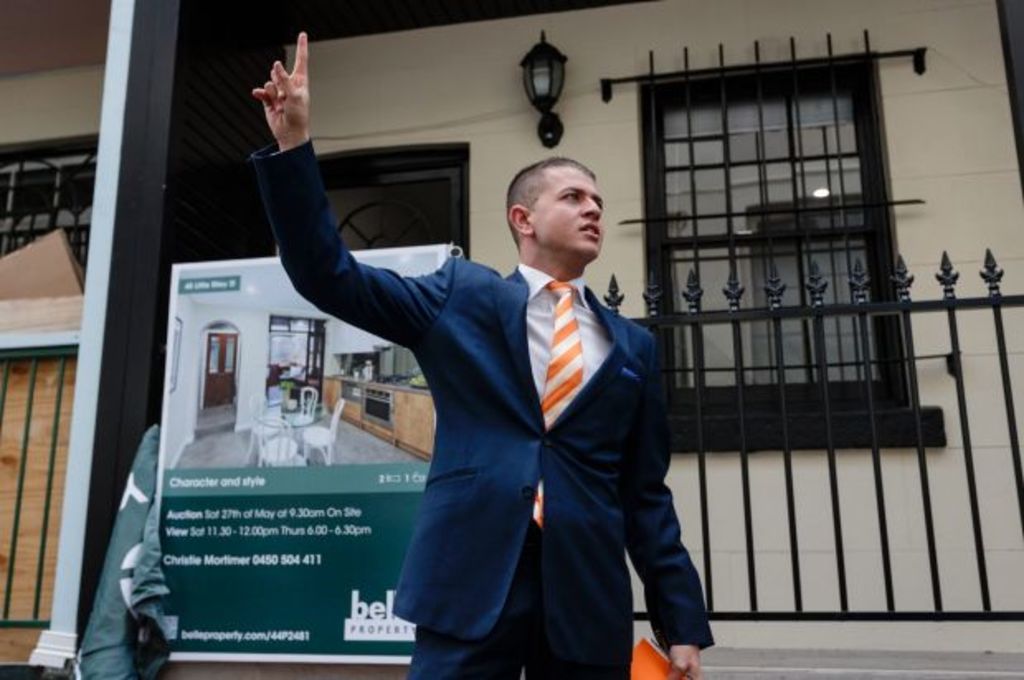
11 charts that get lost between the economics and marketing desks at banks
Aspiring first home buyers may by now have seen a new campaign plastered across billboards around the country – “First home feeling impossible? Not if we can help it”, and an image of a grinning banker with folded arms. Your ANZ “first home coach” has your back.
But look in ANZ’s September Australian housing update, which was sent out today from the bank’s economists rather than marketers, and you won’t see any encouraging smiles.
“Housing affordability has been steadily worsening, especially in Sydney and Melbourne,” senior ANZ economists Daniel Gradwell and Joanne Masters write.
“First home buyers have been priced out of the market, with an average income earner now needing a full decade to save a deposit for a house in Sydney.
“Stamp duty incentives are helpful for a select few, but we do not expect they will address the long-term structural issues.”
It doesn’t fit on the billboard and certainly doesn’t deliver the same pat on the back to hopeful first home buyers, but it’s what the bank actually believes. Times are very tough for first-time buyers.
Australia’s capital city housing market has tipped into unchartered territory. The explosive years of 14-20 per cent year-on-year gains in Sydney and Melbourne are over and, while few expect those markets will go backwards, how will Australians readjust to “normal” gains?
For those hoping to soon become first home buyers it’s more important than ever to be aware of the Australian housing big picture, and a lot of what we need to know are in the following graphs and charts.
1. Affordability
The national average amount of years required to save for a deposit, at a 15 per cent savings rate, is 8.5 years. In Sydney it’s 11 years.
Mortgages remain roughly in-line with the long-term average in terms of affordability and renting is by far the cheapest option at a little over 20 per cent of household income required. It’s no big mystery as to why so many first home buyers have been scared/chased off.

(ANZ chart pack, September 2017)
2. Loan approvals
Banks are still writing loans like mad.

3. First home buyers
But pretty much all are going to investors and upgraders. First home buyers make up a small portion of the market.

4. Liar loans
In their haste to sell those mortgages, the ability of banks to tell a truthful mortgage application from one with fudged numbers flew out the window.
UBS now estimates that $500 billion worth of “not completely factually accurate” mortgages now sit on major bank balance sheets.
Which bank was said to be the worse offender? You guessed it – ANZ.

5. Consumer sentiment in the housing market has hit a 40-year low
Australians can see what’s happening here and they’re nervous. The latest Westpac-Melbourne Institute Consumer Sentiment report showed just 10.5 per cent of Australians believe a house is the wisest place for savings. That’s only 1.5 per cent above stocks as a favoured investment.
Most respondents said paying down debt is the best thing to do with savings.

6. Debt-load woes
That desire to shed some debt is understandable considering the Australian economy now has a never-before-seen level of household debt – about 190 per cent of income.

7. Weak wages growth
Unfortunately wages growth remains near record lows, which makes paying off debt, not to mention saving for your first home, very difficult.

8. Underemployment is the quiet killer
And good luck saving for that home if you’re not a full-time worker. In addition to stagnant wages growth, Australia has a significant underemployment problem. That means a lot of people, often young ones, can’t get enough hours at work.

9. The banks know the party’s over
Anyone who loads up on debt hoping to sell their property in a year or two for a hefty profit and relocate might be disappointed to see that ANZ now expects Sydney houses to return about 3 per cent and Melbourne roughly 2 per cent next year. That’s a long way south of the 15-plus per cent we saw at the height of the boom.

10. The market is already making changes
Auction clearance rates have dropped from about 80 per cent to roughly 65 per cent so far this year as expectations are having to be altered.

11. Mortgage rates are rising
Household lending regulations are being tightened in an attempt to rebalance the housing market, reigning in investor and interest-only lending. Unfortunately banks adapt by raising interest rates out of step with the Reserve Bank. The gap between the RBA’s official cash rate and the average mortgage rate Aussies pay has doubled in the last 10 years.

Bank marketers are in the business of selling you a mortgage. Yes, the bankers will surely deliver a dose of reality when a wide-eyed hopeful heads into a branch looking for their new “coach”, but it’s a warped world of encouragement.
The billboard boasts of the ability of bankers to get first home buyers into a market they see as increasingly impenetrable. Once they’re in there will be no more talk of “coaches”, just regular repayments as interest rates rise and house price growth eases.